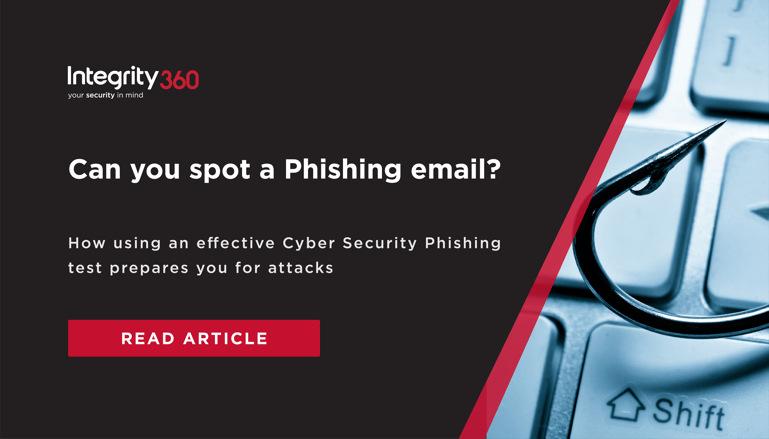Phishing attacks are a major threat to organisations as they continue to evolve and become more sophisticated. One of the key tactics used in these attacks is the creation of spoofed or copycat domains, which mimic legitimate websites and trick users into divulging sensitive information.
In this blog post, we explore the role of spoofed and copycat domains in phishing attacks and how Managed Digital Risk Protection services can help reduce the threat of such attacks.
 How do phishing attacks work?
How do phishing attacks work?
Phishing attacks typically start with an email or message that appears to be from a legitimate source, such as a bank, social media platform, or business partner. The message may ask the user to click on a link or download an attachment, or it may simply ask the user to enter their login credentials or other sensitive information.
The link or attachment may lead to a spoofed or copycat website, which looks like a legitimate site but is actually controlled by the attacker. If the user enters their login credentials or other sensitive information, the attacker can use that information to access the user's account or steal their identity.
Phishing attacks may also use social engineering techniques to trick users into divulging sensitive information. For example, the attacker may pose as an IT administrator and ask the user to reset their password or provide their login credentials for "security reasons." Alternatively, the attacker may use a sense of urgency or fear to convince the user to take immediate action, such as clicking on a link to avoid a supposed security threat.
Phishing attacks can also be conducted through other channels, such as phone calls or text messages, and may involve different tactics such as voice phishing (vishing) or smishing (SMS phishing).
What are spoofed and copycat domains?
Spoofed domains are websites that are designed to look like legitimate sites, such as a bank or social media platform. The goal of these sites is to trick users into entering their login credentials or other sensitive information. The domain name may be similar to the legitimate site, but with slight variations, such as a misspelled word or a different top-level domain (TLD).
Copycat domains are similar to spoofed domains in that they are designed to look like legitimate sites, but they go one step further by copying the entire website, including the design and content. This type of attack is more sophisticated and can be harder to detect, as the user may not notice that they are on a different website.
Why are spoofed and copycat domains used in phishing attacks?
Spoofed and copycat domains are used in phishing attacks because they are an effective way to trick users into divulging sensitive information. By mimicking a legitimate site, attackers can create a sense of familiarity and trust with the user, making it more likely that they will enter their login credentials or other personal information.
Spoofed and copycat domains can also be used to bypass security measures such as two-factor authentication (2FA). If a user enters their login credentials on a spoofed or copycat site, the attackers can immediately use those credentials to log in to the legitimate site and bypass the 2FA process.

How can Managed Digital Risk Protection services reduce the threat of spoofed and copycat domains?
Managed Digital Risk Protection services can help reduce the threat of spoofed and copycat domains in a number of ways. Here are some of the key ways that these services can help protect against phishing attacks:
Monitoring for spoofed and copycat domains
One of the key ways that Managed Digital Risk Protection services can help reduce the threat of spoofed and copycat domains is by monitoring the internet for domains that are similar to your organisation's domain name. By doing this, the service can detect when a spoofed or copycat domain is created and take action to have it taken down.
Early warning system
Managed Digital Risk Protection services can provide an early warning system for potential phishing attacks. By monitoring the internet for suspicious activity, such as the registration of a new domain that is similar to your organisation’s domain name, the service can alert you to potential threats before they have a chance to do any damage.
Rapid takedown of spoofed and copycat domains
If a spoofed or copycat domain is detected, Managed Digital Risk Protection services can take rapid action to have the site taken down. This can prevent users from falling victim to the attack and limit the damage that the attackers can do.
Educating employees
Managed Digital Risk Protection services can also help educate employees about the risks of phishing attacks and how to avoid them. By providing training and awareness programs, the service can help employees become more vigilant and better equipped to identify and avoid phishing attacks.
Continuous monitoring and response
Managed Digital Risk Protection services provide continuous monitoring and response to new threats. As phishing attacks continue to evolve and become more sophisticated, the service can adapt and update its defences to stay ahead of the attackers.
Spoofed and copycat domains are a growing threat in the world of phishing attacks. These attacks are becoming more sophisticated, making it increasingly important for organisations to take steps to protect themselves and their employees.
It is important for organisations to take a proactive approach to cyber security, including implementing a Managed Digital Risk Protection service. By doing so, they can help reduce the risk of phishing attacks and protect their sensitive data and intellectual property. Ultimately, investing in cyber security is not just about protecting your organisation, but also about protecting your customers and stakeholders, and ensuring that you maintain their trust and confidence in your business.
If you are worried about cyber threats or need help in improving your organisation’s visibility please Get in touch to find out how you can protect your organisation.







